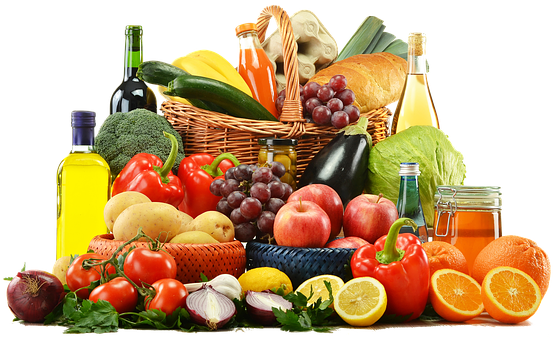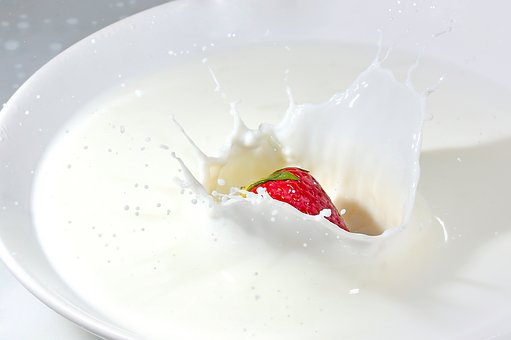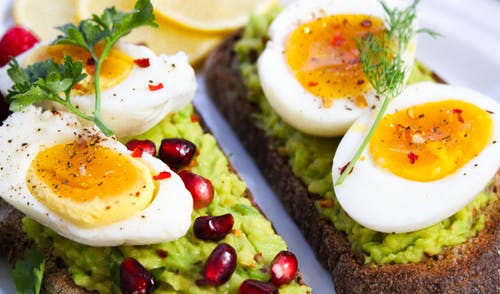
If you are looking for how to use your diet to enhance iron absorption and address anaemia, this article is for you. Iron is a very important micronutrient that your body needs even for basic functions like breathing.
Some of the symptoms associated with low iron status/anaemia are fatigue, poor ability to think, and depression. As a young girl/woman, improving your iron status can improve your energy levels towards a more productive life. It can change your life.
While Iron is very important to your body, a hormone called Hepcidin tightly regulates the iron balance. This means that even when you consume iron in your diet, it does not mean that your body will always use it. If your body needs more iron, less hepcidin is produced so that you can get more iron and when body iron is high, hepcidin level goes up and blocks iron from getting into the body.
Why such a tight regulation? Iron is not actively excreted by the body unlike the water-soluble vitamins, and an overload of iron is bad for the body. Iron balance in the body is really important for good health. One theory is that excess iron in the body is important in the aetiology of diseases like stroke, coronary artery disease, neurogenerative disorders and certain carcinomas. Iron is important in free radical formation.
Also, our bodies absorb the two types of iron in our diet differently.
Before I go on, I should mention that there are two types of iron in food – heme iron and non-heme iron. The heme iron is found in animal foods while the non-heme is found in plants. The Heme iron is readily absorbed by the body and is not affected so much by other foods we eat or other factors, unlike the non-heme iron.
Scientific reviews tell us that most of the iron we eat is from non-heme iron and just about 5-10% is from heme iron. Ironically, the small amount of heme iron we eat is better absorbed by our bodies than the non-heme iron. Still, just about 20-30% of heme iron that we consume is absorbed while about 1 – 10% of non-heme iron is absorbed in your body.
Read Article on how much iron you need
Three factors affect your body’s ability to absorb iron:
- Iron stores
- Type of iron in the diet. If you eat more of non-heme iron, your body will absorb less compared to when you eat heme iron
- Certain dietary factors. Some foods contain certain chemicals that block iron from being absorbed in the body. E.g. Tannins in tea, phosphoprotein in eggs
On Iron Stores

If your iron stores are high, your body will absorb less iron. If your iron stores are low, your body will absorb more. In pregnancy, your iron needs increase and so your body increases the ability to absorb more iron during this period particularly during the later stage of pregnancy. Periods of intense growth such as in infancy and adolescence, also increase the need for iron in the body. Also, women who menstruate require more iron than those who do not.
Let’s focus on the type of iron in the diet

Eating heme iron sources such as meat, poultry and fish enhances iron absorption. These are the best form of iron. Apart from this, they also help the absorption of non-heme iron. That is your body gets more iron from your Edika ikong soup or Jews mallows (Ewedu, yoyo) when you eat them with your chicken, beef, fish than when you eat the soups or vegetables alone.
Also, the amount of heme iron is important. Ample amount of meat and fish in your meals increases bioavailability in the presence of phytates and polyphenols (found in your swallows, grains and vegetables) better than a small amount of them.

If you are vegetarian or cannot afford to eat enough of meat, fish and poultry, your diet would mostly consist of non-heme iron which is not readily available for your body to use. Ways to improve your iron absorption is by ensuring the intake of vitamin C with every meal. Taking 100mg of vitamin C can increase non-heme iron (iron mostly from plant-based foods) absorption by more than 50%.
Apart from the challenges of non-heme iron, plant-based diets can be high in phytates and tannins (antinutrients). These antinutrients block iron absorption. However, vitamin C intake can help overcome this. Please note that vitamin C should be taken with meals for it to be effective for iron absorption.
Dietary factors that affect iron absorption

These are foods or foods that have substances that reduce iron absorption
Antinutrients
Antinutrients such as tannins reduce iron absorption (non-heme iron). You can find tannins in tea, coffee, dark chocolate, fruits, legumes (beans), wine grapes and red wine. If you are an avid tea or coffee drinker, you need to pay attention to this.
The more tannins in your food, the more the reduction. A higher amount of tannins can reduce non-heme iron absorption by up to 88%.
Other antinutrients include phytate which you will find in your whole grains and cereals, rice, pasta. What phytate does is to bind the iron in a way that your body cannot use it.
How can you reduce the effect of tannins and phytate?
Taking vitamin C along with these foods can improve iron absorption. For teas and coffees, it is best to schedule the intake between meals and not with your meals.
For phytates, there are some food processing techniques such as soaking, fermenting, sprouting, milling and heating/cooking that help to reduce or even remove phytates. So, if you are going to drink pap (Akamu) for example, the soaking, fermentation, milling and heating processes are very important to the phytate reduction or removal so do not skip them.
These days, you will find milled cereals such as millet powder/flour on the shelves. Many of them are not properly processed to reduce their phytate content, so you need to consider this when purchasing and preparing your food. As mentioned earlier, pairing your meals with meat, fish, as well as vitamin C, (fruits containing Vitamin C as well as a supplement) can help fight the negative effects of the phytate.
In Africa, we have a lot of foods we eat that are high in phytates and polyphenols. For this reason, we need to pay attention to these antinutrients.
Apart from vitamin C, other organic acids such as citric acid, lactic acid have been shown to enhance on-heme iron absorption. You can find some of these acids in fermented vegetables like Sauerkrauts.
Calcium

While calcium is important for the body too, high calcium intake has been found to hinder the absorption of iron – both heme and non-heme iron. It should be noted that some studies and reviews show that in the long term, consuming calcium does not affect iron absorption. However, it is best to be on the side of caution. As with your teas and coffees, you can schedule to have your high calcium drinks and foods in between meals as opposed to with your meals. Large amounts of calcium can be found in milk, yoghurt and other dairy products. Others are seeds. While you will find smaller amounts of calcium in other foods such as vegetables, and beans when compared to dairy, these small amounts should not affect overall iron intake.
Eggs

Egg whites contain a protein called ovotransferrin and egg yolk contains phosvitin both of which binds iron and reduces its availability for absorption. So, eggs are another important food source that you need to space out in your diet when trying to consume enough iron without using supplements.
Vitamin A

There is evidence that a deficiency in Vitamin A affects iron metabolism. Some intervention studies have also shown that vitamin A supplementation improves iron status and helps reduce iron deficiency anaemia. So, if you’re focused on a food-based approach, eating foods such as liver that contain vitamin A and iron may be more effective at improving iron status than just taking iron supplements when you’re deficient in vitamin A.
Please lookout for an iron optimized diet plan in the download section.
In A Nutshell
Iron deficiency is a huge problem. Even if it doesn’t lead to anaemia, there is evidence that low iron status is associated with poor learning and decreased cognitive development.
I have highlighted very important information on how best to improve your iron status. Your iron status is important, you need to know why your iron stores are low (is it a result of pregnancy, puberty, menstruation etc?).
Secondly, you need to focus on consuming enough heme iron (meat, fish, poultry). This also helps the absorption of non-heme iron. Vitamin C found in fruits, as well as a synthetic supplement, is a great weapon in optimizing iron absorption.
Lastly, look at your diet and fish out factors that are reducing your ability to absorb more iron. E.g. are you drinking more tea or eating eggs with your iron-rich meals? How are you planning your diet to ensure that certain foods do not interfere with your iron absorption in your body?
Finally, while this article focuses on the micronutrient -iron-, it is important to note that many of the nutrients we consume work together to keep us in good health. E.g. I mentioned how Vitamin A deficiency can affect iron. So, a nutritious and diverse diet is important.
To summarize this article again in a sentence for those who do not have time to read the details: To optimize your iron, eat meals that have a high amount of heme iron (particularly red meat) along with vitamin C and less of foods high in phytates and tannins.
If you have any questions or need more information, please do not hesitate to ask.
As always, I encourage you to eat better and live better.


